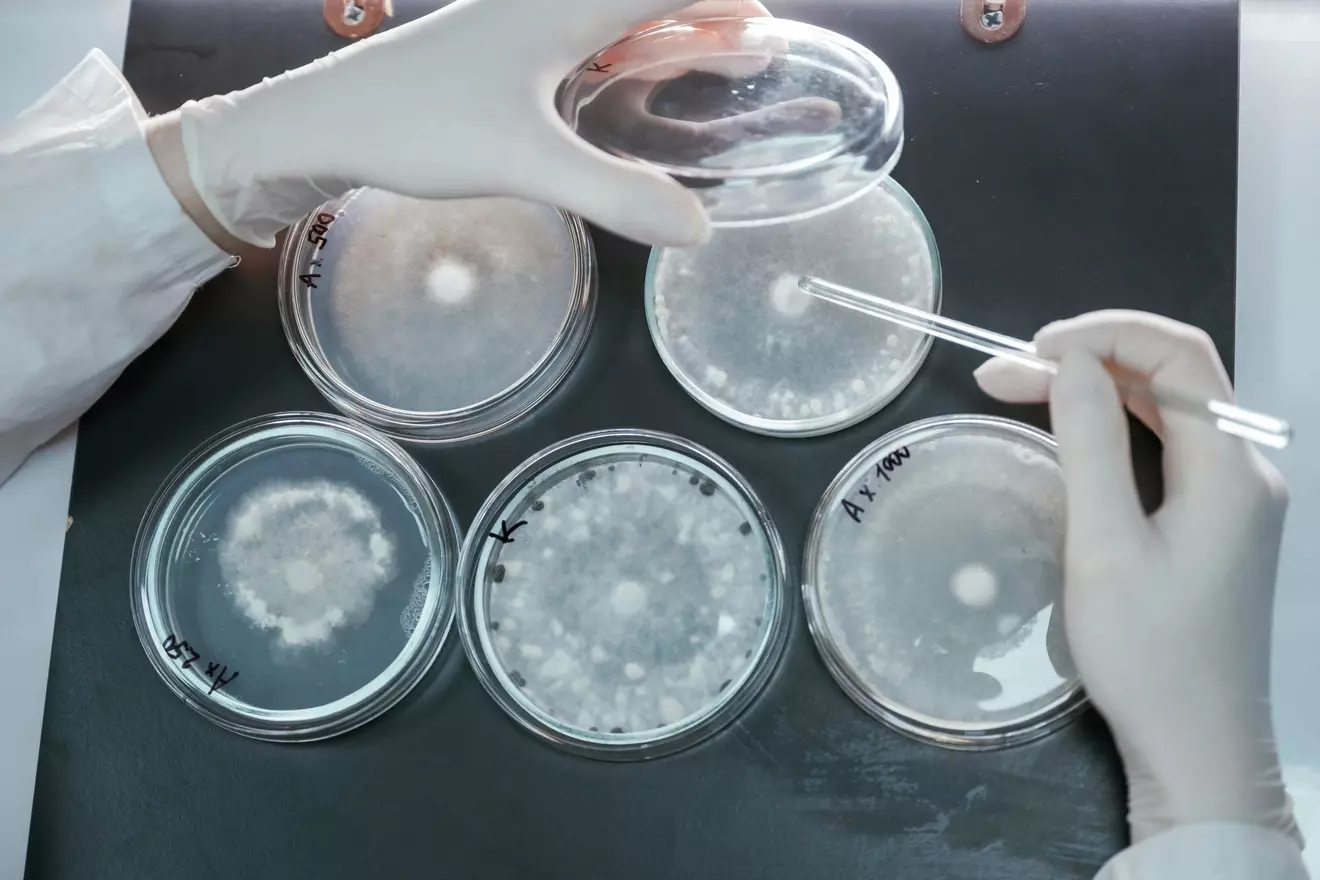Last Updated on November 27, 2025 by Bilal Hasdemir

At Liv Hospital, we understand the importance of complete cancer care. For those looking for the best treatments, knowing about adjuvant therapy is key. Adjuvant cancer therapy is extra treatment after the main therapy to get rid of any cancer cells left.
We are dedicated to top-notch healthcare with a focus on the patient. We make sure every treatment plan is safe, of high quality, and meets international standards. This therapy can be chemotherapy, radiation, hormone therapy, or targeted therapy. It all works to lower the chance of cancer coming back.
Key Takeaways
- Adjuvant therapy is a supplementary treatment given after primary therapy.
- It aims to eliminate remaining cancer cells and reduce recurrence risk.
- Treatment options include chemotherapy, radiation, and hormone therapy.
- Adjuvant therapy improves survival rates and reduces cancer recurrence.
- Liv Hospital provides complete cancer care with a patient-focused approach.
Understanding Adjuvant Cancer Therapy Fundamentals
Our knowledge of cancer is growing, making adjuvant cancer therapy key in cancer care. It aims to get rid of any cancer cells left after the main treatment. This helps lower the chance of cancer coming back.
Definition and Core Concepts
Adjuvant cancer therapy is extra treatment after the main one to prevent cancer from coming back. It targets tiny cancer cells that tests can’t find. This is because even when a tumor is removed, tiny cancer cells might stay and cause problems later.
Key elements of adjuvant therapy include:
- Elimination of microscopic residual disease
- Reduction of cancer recurrence risk
- Improvement in patient survival rates
- Personalized treatment plans based on cancer type, stage, and patient factors
Historical Development of Adjuvant Approaches
Adjuvant therapy has changed a lot over the years. At first, treatments were simple and not well understood. But, as we learned more about cancer, treatments got better and more precise.
The historical development can be marked by several key milestones:
- The introduction of chemotherapy as an adjuvant treatment
- The development of hormone therapy for hormone-sensitive cancers
- The advent of radiation therapy techniques
- The integration of immunotherapy and targeted therapies into adjuvant regimens
These changes have made adjuvant therapy a specialized field. It offers hope to patients all over the world. As we keep finding new treatments, adjuvant therapy’s role in cancer survivorship will grow even more.
The Meaning of Adjuvant Cancer Treatment
Understanding ‘adjuvant’ in cancer treatment is key. We see many terms for managing cancer. Adjuvant therapy is a big part of cancer care.
What Does “Adjuvant” Mean in Oncology?
In oncology, “adjuvant” means a treatment added to the main therapy. Adjuvant therapy aims to kill any cancer cells left after the main treatment. This lowers the risk of cancer coming back.
Distinguishing Adjuvant from Neoadjuvant and Palliative Care
It’s important to know the difference between adjuvant therapy and other cancer care types. Neoadjuvant therapy is given before the main treatment. It makes tumors smaller, making them easier to treat.
Palliative care aims to ease symptoms and stress of serious illnesses like cancer. It’s given at any stage of treatment. Its main goal is to improve life quality for patients and their families.
Adjuvant therapy is a key part of cancer treatment, aiming to lower recurrence risk. Knowing the differences between adjuvant, neoadjuvant, and palliative care helps patients understand their treatment better.
Types of Adjuvant Cancer Therapies
It’s important to know about the different adjuvant cancer therapies. These treatments help make the main treatment work better. We’ll look at chemotherapy, radiation therapy, hormone therapy, and immunotherapy.
Adjuvant Chemotherapy Protocols
Adjuvant chemotherapy uses drugs to kill cancer cells that may have spread. It’s used for cancers like breast, colon, and lung. The goal is to get rid of any cancer cells left behind.
We use chemotherapy protocols made just for your cancer type and stage.
Radiation Therapy in the Adjuvant Setting
Radiation therapy uses high-energy rays to kill cancer cells. In the adjuvant setting, it targets any cancer cells left in the tumor area. This lowers the chance of the cancer coming back.
We use advanced radiation techniques to protect healthy tissues.
Hormone Therapy as Adjuvant Treatment
Hormone therapy is for cancers that grow because of hormones, like some breast and prostate cancers. It blocks the body’s hormones, stopping cancer cells from growing. As an adjuvant treatment, it helps prevent cancer from coming back.
Immunotherapy and Targeted Therapies
Immunotherapy helps your immune system fight cancer. It’s used as an adjuvant therapy to strengthen your body’s defense. New treatments like cemiplimab have been approved for skin cancer.
Targeted therapies focus on specific cancer cell traits. They are more precise and less harmful to normal cells.
The Science Behind Adjuvant Cancer Treatment
Adjuvant cancer treatment is key in modern oncology. It aims to get rid of cancer cells left after main treatments like surgery. These tiny cells, or micrometastases, are hard to find but can cause cancer to come back if not treated.
Targeting Microscopic Disease and Micrometastases
Adjuvant therapy goes after these tiny cancer cells. They might be in lymph nodes, blood, or other parts of the body. By fighting these cells, adjuvant therapy lowers the chance of cancer coming back and helps patients do better.
The importance of addressing micrometastases is huge. They are a big reason why treatments fail in many cancers. A top oncologist says, “Micrometastases are key in knowing if cancer will come back. That’s why adjuvant therapy is so important in treating cancer.”
“The presence of micrometastases is a critical factor in determining the likelihood of cancer recurrence, making adjuvant therapy a vital component of comprehensive cancer care.”
Molecular Mechanisms of Action
Adjuvant therapy works by targeting cancer cells at a molecular level. Different treatments, like chemotherapy, hormone therapy, and targeted therapy, each have their own way of working.
- Chemotherapy stops cancer cells from growing by messing with their cell division.
- Hormone therapy blocks hormones that help cancer cells grow.
- Targeted therapy uses drugs that only hit cancer cells, not normal cells.
Adjuvant therapies can be used alone or together, based on the cancer type, stage, and patient’s health. The choice depends on the tumor’s molecular makeup and the patient’s overall health.
| Therapy Type | Molecular Mechanism | Effect on Cancer Cells |
|---|---|---|
| Chemotherapy | Interferes with cell division | Kills rapidly dividing cancer cells |
| Hormone Therapy | Blocks hormone receptors | Inhibits growth of hormone-sensitive tumors |
| Targeted Therapy | Targets specific molecular markers | Destroys cancer cells with specific mutations |
Knowing how adjuvant therapy works helps doctors make treatment plans that fit each patient. This way, care is more effective and side effects are less likely.
When Is Adjuvant Therapy Recommended?
Adjuvant therapy is a key part of cancer treatment. It’s suggested for certain patients based on several factors. We suggest it when the chance of cancer coming back is high. And when the benefits of treatment are greater than the risks.
Cancer Types Most Responsive to Adjuvant Treatment
Some cancers do better with adjuvant therapy. These are cancers at high risk of coming back or spreading.
Breast cancer, for example, often gets chemotherapy as adjuvant therapy. This is true for hormone receptor-negative or HER2-positive cases. Stage III colon cancer patients also get chemotherapy to lower recurrence risk.
Staging, Risk Assessment, and Patient Selection Factors
Choosing adjuvant therapy depends on cancer stage, risk, and patient factors.
Cancer staging is key in deciding on adjuvant therapy. Patients with more advanced disease are more likely to get it.
| Cancer Type | Stage | Risk Factors | Adjuvant Therapy Recommendation |
|---|---|---|---|
| Breast Cancer | II-III | Hormone receptor-negative, HER2-positive | Chemotherapy, targeted therapy |
| Colon Cancer | III | High-grade tumor, lymph node involvement | Chemotherapy |
| Lung Cancer | II-III | Non-small cell lung cancer, lymph node involvement | Chemotherapy, radiation therapy |
Adjuvant Therapy in Common Cancers
Adjuvant therapy is key in treating many cancers. It helps improve survival rates and outcomes. We’ll look at how it’s used in common cancers.
Breast Cancer Adjuvant Protocols
In breast cancer, adjuvant therapy aims to lower recurrence risk after surgery. The treatment choice depends on hormone receptor status, HER2 status, and disease stage.
For hormone receptor-positive breast cancer, hormone therapy is often used. This includes tamoxifen or aromatase inhibitors. They block estrogen’s effects on cancer cells, reducing recurrence risk.
HER2-positive breast cancer benefits from targeted therapies like trastuzumab. Adjuvant chemotherapy is also used, mainly in high-risk cases.
Colorectal Cancer Adjuvant Approaches
In colorectal cancer, adjuvant therapy is for stage III disease and some stage II cases. The main treatment is chemotherapy, often FOLFOX or CAPOX.
Chemotherapy choice depends on tumor stage, grade, and molecular traits. Rectal cancer may also include radiation therapy, based on surgery and pathology.
Lung Cancer Adjuvant Strategies
In non-small cell lung cancer (NSCLC), adjuvant chemotherapy is recommended for stage II-III patients after surgery. Common regimens include platinum-based treatments like cisplatin or carboplatin.
For EGFR-mutant NSCLC, adjuvant targeted therapy with EGFR inhibitors is considered. Immunotherapy’s role in NSCLC adjuvant treatment is being studied in trials.
Other Cancer Types and Emerging Applications
Adjuvant therapy is also applied in melanoma, gastric cancer, and some gynecological cancers. New uses include immunotherapy and targeted therapies in various settings.
As we learn more about cancer, adjuvant therapy will likely evolve. This could lead to more tailored and effective treatments for patients.
| Cancer Type | Common Adjuvant Therapies | Emerging Approaches |
|---|---|---|
| Breast Cancer | Hormone therapy, chemotherapy, targeted therapy | Immunotherapy, novel targeted therapies |
| Colorectal Cancer | Chemotherapy (FOLFOX, CAPOX) | Immunotherapy for MSI-high tumors |
| Lung Cancer (NSCLC) | Platinum-based chemotherapy | Targeted therapy for EGFR mutations, immunotherapy |
Benefits and Effectiveness of Adjuvant Cancer Therapy
Adjuvant cancer therapy has changed how we treat cancer. It helps remove leftover cancer cells. This lowers the chance of cancer coming back and boosts survival rates. We’ll look at how adjuvant therapy affects survival, recurrence risk, and quality of life.
Survival Rate Improvements
Adjuvant therapy has greatly improved survival rates for many cancers. It targets tiny cancer cells to stop them from growing back. This helps patients live longer and cancer-free.
Research shows that adjuvant therapy increases both overall and disease-free survival. It’s a key part of cancer treatment.
Recurrence Risk Reduction
Reducing cancer recurrence is a main goal of adjuvant therapy. It kills off any remaining cancer cells. This is very important for patients with high-risk cancer.
Reducing recurrence risk is a big plus of adjuvant therapy. It gives patients a better chance of survival and a better quality of life.
Quality of Life Considerations
Adjuvant therapy offers many benefits but can also affect quality of life. Side effects include fatigue, nausea, and hair loss. But, most of these are temporary and can be managed.
We need to weigh the good of adjuvant therapy against its side effects. This ensures the best outcome for patients.
| Cancer Type | Survival Rate Improvement | Recurrence Risk Reduction |
|---|---|---|
| Breast Cancer | 20-30% | 40-50% |
| Colorectal Cancer | 15-25% | 30-40% |
| Lung Cancer | 10-20% | 20-30% |
Adjuvant therapy has greatly improved cancer treatment. It offers better survival rates and lower recurrence risks. Understanding its benefits and side effects helps doctors create the best treatment plans for patients.
Potential Side Effects and Management Strategies
Adjuvant therapy is key in stopping cancer from coming back. But, it can cause side effects that affect a patient’s life quality. We need to know about these side effects and how to manage them.
Common Side Effects by Treatment Type
Adjuvant therapies can cause different side effects. For example, adjuvant chemotherapy can make you tired, lose your hair, and feel sick. This happens because chemotherapy affects all fast-growing cells, not just cancer cells.
Adjuvant radiation therapy might cause skin problems, tiredness, and pain in the treated area. The severity of these effects depends on the treatment dose and area. Hormone therapy for breast cancer can lead to hot flashes, mood swings, and changes in sex drive.
Supportive Care and Side Effect Management
Managing side effects is key to keeping patients’ quality of life high during adjuvant therapy. Supportive care is essential here. It includes services to help manage treatment side effects.
Here are some ways to manage side effects:
- Medications to help with nausea and pain
- Changes in diet and exercise to reduce fatigue
- Psychological support, like counseling and support groups, for emotional challenges
Understanding and managing adjuvant therapy side effects is vital. Healthcare teams work together with patients to make treatment easier. This way, the benefits of adjuvant therapy are maximized, and its downsides are minimized.
Conclusion
Adjuvant cancer therapy is key in fighting cancer. It helps get rid of leftover cancer cells and lowers the chance of cancer coming back. We’ve looked into what it is, its types, and how it helps in cancer treatment.
Knowing about adjuvant therapy helps both patients and doctors make better choices. It has been proven to increase survival rates and lower the risk of cancer coming back. This is true for cancers like breast, colorectal, and lung cancer.
Good adjuvant therapy needs a team effort. It uses treatments like chemotherapy, radiation, hormone therapy, and immunotherapy. We see how important it is for managing tumors and improving patient care.
As we keep improving in fighting cancer, adjuvant therapy stays a vital part of treatment. It gives patients the best shot at living a long and good life. By adding adjuvant therapy to cancer care plans, we can make treatment better and care for patients more effectively.
FAQ
What is adjuvant cancer therapy?
Adjuvant cancer therapy is a treatment given after the main therapy, like surgery. It aims to get rid of any cancer cells left behind. This helps lower the chance of cancer coming back.
How does adjuvant therapy differ from neoadjuvant therapy?
Neoadjuvant therapy is given before the main treatment. Adjuvant therapy is given after to remove any leftover cancer cells.
What types of adjuvant cancer therapies are available?
There are many types of adjuvant cancer therapies. These include chemotherapy, radiation, hormone therapy, immunotherapy, and targeted therapies. Each is used for different cancers.
What is the role of adjuvant therapy in cancer treatment?
Adjuvant therapy is key in cancer treatment. It helps get rid of tiny cancer cells, lowers the chance of cancer coming back, and improves survival rates.
When is adjuvant therapy recommended?
Doctors recommend adjuvant therapy based on the cancer type and stage. They also consider the patient’s risk and health.
What are the benefits of adjuvant cancer therapy?
Adjuvant therapy offers many benefits. It can improve survival rates, lower the risk of cancer coming back, and enhance the patient’s quality of life.
What are the possible side effects of adjuvant therapy?
Side effects of adjuvant therapy vary by treatment type. They can include fatigue, nausea, hair loss, and more. Supportive care can help manage these side effects.
How is adjuvant therapy used in common cancers?
Adjuvant therapy is used in many cancers, like breast, colorectal, and lung cancer. Each cancer type has its own treatment plan.
What is the significance of adjuvant therapy in cancer care?
Adjuvant therapy is a critical part of cancer care. It helps remove remaining cancer cells, lowers recurrence risk, and improves overall cancer outcomes.
How does adjuvant therapy impact quality of life?
Adjuvant therapy can affect quality of life. It’s important to manage side effects carefully to ensure the best outcomes.
References
Wikipedia — Adjuvant therapy







